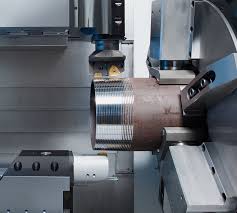CNC turning services play a pivotal role in modern precision engineering, where accuracy and consistency are essential for producing high-quality components. Unlike manual machining, CNC (Computer Numerical Control) turning uses advanced programming and automated machine tools to create parts with exceptional precision. This precision is critical in industries like aerospace, automotive, medical devices, and electronics, where even the smallest deviation can compromise safety and performance. With the ability to achieve tight tolerances, CNC turning ensures that manufacturers can produce components that meet strict quality standards while reducing errors and rework.
Another key advantage of CNC turning services lies in their ability to replicate exact specifications repeatedly. Traditional machining methods often rely heavily on human expertise, which can lead to inconsistencies. In contrast, CNC turning relies on computer programming, which ensures that each part produced is identical to the last. This repeatability not only boosts efficiency but also helps businesses save time and resources. As advanced manufacturing continues to evolve, the demand for high-precision, reliable machining will only grow, making CNC turning a cornerstone of industrial innovation.
Versatility and Complexity in Modern Manufacturing
One of the greatest strengths of CNC turning services is their versatility in handling a wide range of materials and complex designs. From metals such as aluminum, steel, and titanium to plastics and composites, CNC turning machines can process diverse materials with ease. This adaptability allows manufacturers to serve different industries and meet unique customer requirements. For instance, aerospace components often require lightweight yet durable materials, while the medical sector demands biocompatible materials with intricate geometries. CNC turning delivers both by combining precision with flexibility.
In addition to material diversity, CNC turning services excel at producing complex shapes that would be extremely difficult or impossible with manual machining. Advanced CAD (Computer-Aided Design) and CAM (Computer-Aided Manufacturing) software integrate seamlessly with CNC systems, allowing manufacturers to create intricate designs with tight tolerances. This capability supports innovation across industries, enabling engineers to push the boundaries of product design. Whether it’s creating micro-sized implants for healthcare or durable parts for heavy machinery, CNC turning provides the versatility and sophistication needed to keep pace with technological advancements.
Efficiency and Cost-Effectiveness of CNC Turning Services
CNC turning services not only enhance precision but also bring significant improvements in production efficiency. The automation of machining processes reduces downtime and enables faster turnaround times. Machines can operate continuously with minimal supervision, which maximizes productivity while lowering labor costs. In addition, CNC programs can be quickly adjusted for new production runs, making the transition from prototype to large-scale manufacturing seamless. This flexibility makes CNC turning a cost-effective solution for both small businesses and large manufacturers.
Cost savings also extend to material utilization and reduced waste. CNC turning machines are programmed to use materials efficiently, cutting only what is necessary and minimizing scrap. This optimization reduces overall production costs and supports sustainable manufacturing practices. For industries competing in global markets, maintaining cost efficiency while ensuring top-notch quality is essential. CNC turning services provide this balance, offering manufacturers a way to remain competitive without compromising on innovation or performance.
Supporting Innovation and Product Development
CNC turning services are integral to research, development, and prototyping, providing engineers with the tools they need to innovate. When creating a new product, precision machining allows for rapid prototyping, where designs can be tested and refined quickly. This ability to produce accurate prototypes helps manufacturers identify potential flaws and improve designs before moving to mass production. As a result, the development cycle is shortened, and companies can bring products to market faster.
Moreover, CNC turning supports the increasing demand for customized and specialized products. Advanced industries often require tailor-made components that traditional manufacturing cannot produce efficiently. CNC turning machines, driven by digital programming, make it possible to create unique designs at scale. This adaptability fosters innovation across industries, from custom medical implants to specialized automotive parts. By combining speed, accuracy, and customization, CNC turning services are driving the next generation of product development and technological progress.
The Future of CNC Turning in Advanced Manufacturing
As advanced manufacturing continues to embrace digital transformation, CNC turning services are evolving alongside Industry 4.0 technologies. The integration of artificial intelligence, machine learning, and the Internet of Things (IoT) into CNC systems enhances predictive maintenance, process optimization, and real-time monitoring. These advancements increase reliability and minimize machine downtime, ensuring consistent production. With smart factories becoming more prevalent, CNC turning will play a crucial role in creating interconnected, efficient manufacturing ecosystems.
Furthermore, the future of CNC turning services will be shaped by sustainability and global competitiveness. Manufacturers are under increasing pressure to adopt environmentally friendly practices and reduce carbon footprints. CNC turning machines, with their efficient material usage and energy optimization, align with these goals. As companies seek to maintain competitiveness in global markets, CNC turning will continue to be an essential tool for producing high-quality, innovative, and sustainable products. Its ability to balance precision, efficiency, and adaptability ensures that it remains a driving force in the future of advanced manufacturing.





Comments